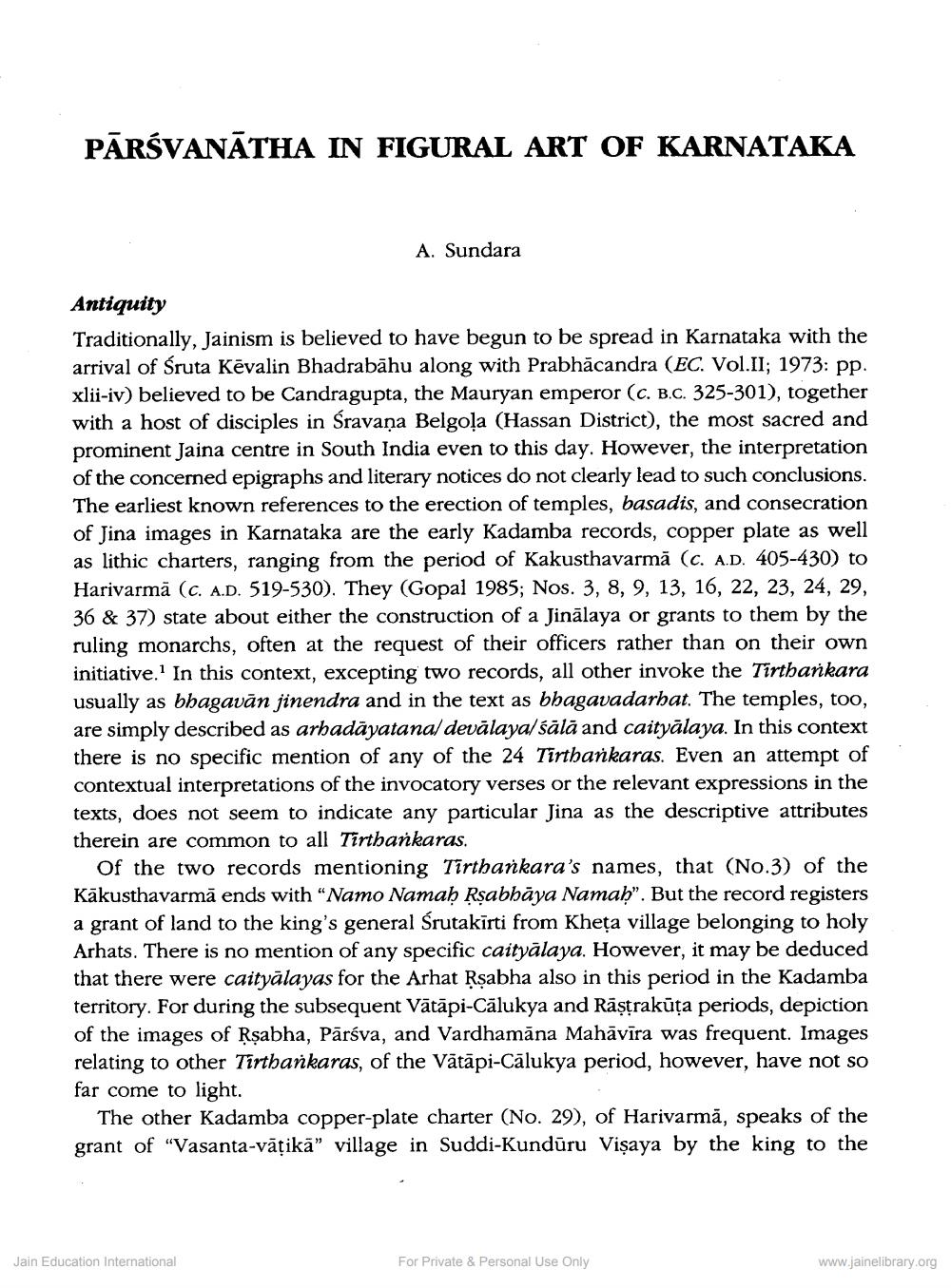________________
PĀRSVANĀTHA IN FIGURAL ART OF KARNATAKA
A. Sundara
Antiquity
Traditionally, Jainism is believed to have begun to be spread in Karnataka with the arrival of Śruta Kēvalin Bhadrabahu along with Prabhācandra (EC. Vol.II; 1973: pp. xlii-iv) believed to be Candragupta, the Mauryan emperor (c. B.C. 325-301), together with a host of disciples in Sravana Belgola (Hassan District), the most sacred and prominent Jaina centre in South India even to this day. However, the interpretation of the concerned epigraphs and literary notices do not clearly lead to such conclusions. The earliest known references to the erection of temples, basadis, and consecration. of Jina images in Karnataka are the early Kadamba records, copper plate as well as lithic charters, ranging from the period of Kakusthavarma (c. A.D. 405-430) to Harivarmā (C. A.D. 519-530). They (Gopal 1985; Nos. 3, 8, 9, 13, 16, 22, 23, 24, 29, 36 & 37) state about either the construction of a Jinālaya or grants to them by the ruling monarchs, often at the request of their officers rather than on their own initiative.' In this context, excepting two records, all other invoke the Tirthankara usually as bhagavan jinendra and in the text as bhagavadarbat. The temples, too, are simply described as arbadayatana/devālaya/sälä and caityalaya. In this context there is no specific mention of any of the 24 Tirthankaras. Even an attempt of contextual interpretations of the invocatory verses or the relevant expressions in the texts, does not seem to indicate any particular Jina as the descriptive attributes therein are common to all Tirthankaras.
Of the two records mentioning Tirthankara's names, that (No.3) of the Kākusthavarmā ends with "Namo Namaḥ Rṣabhāya Namaḥ". But the record registers a grant of land to the king's general Śrutakirti from Kheta village belonging to holy Arhats. There is no mention of any specific caityalaya. However, it may be deduced that there were caityalayas for the Arhat Rṣabha also in this period in the Kadamba territory. For during the subsequent Vätäpi-Calukya and Rāṣṭrakūta periods, depiction of the images of Rṣabha, Pārsva, and Vardhamana Mahāvīra was frequent. Images relating to other Tirthankaras, of the Vatapi-Calukya period, however, have not so far come to light.
The other Kadamba copper-plate charter (No. 29), of Harivarma, speaks of the grant of "Vasanta-väțikä" village in Suddi-Kundūru Vişaya by the king to the
Jain Education International
For Private & Personal Use Only
www.jainelibrary.org




